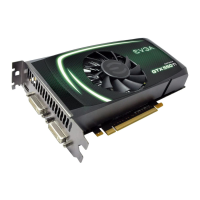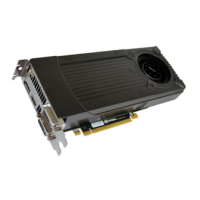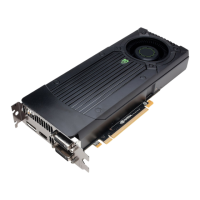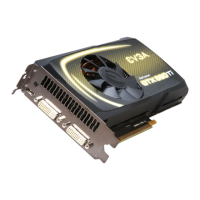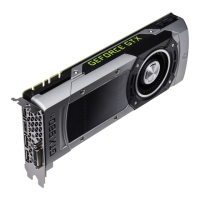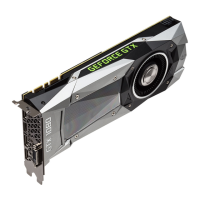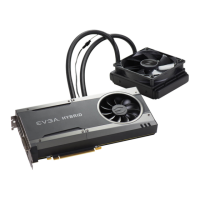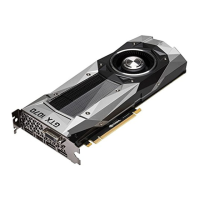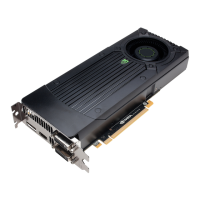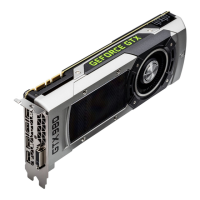Do you have a question about the Nvidia GeForce GTX 1070 Ti and is the answer not in the manual?
Remove screws from the back of the card to separate the backplate.
Remove spring-loaded screws, unplug fan connector, and remove remaining screws.
Mount one screw and nut onto the bracket for clearance.
Thoroughly clean the GPU with high-percentage Isopropyl Alcohol.
Place new heatsink and fan over VRM, securing with a single screw.
Line up copper heatsink for memory, then mount waterblock with spring-loaded screws.
Connect waterblock pump and fan power via pass-through cable to graphics card.
Route wires underneath the fan using heatsink fins, flattening cables parallel to PCB.
Attach rubber insert to card edge to hold tubes, routing fan-connector underneath.
Plug the 2-pin LED power cable from the shroud into the LED header.
Place one thermal pad on the back of the PCB.
Place shroud over card, align with tubing and cutouts, secure backplate with screws.
Details the one-year warranty and liability limitations for the cooling kit.
Remove screws from the back of the card to separate the backplate.
Remove spring-loaded screws, unplug fan connector, and remove remaining screws.
Mount one screw and nut onto the bracket for clearance.
Thoroughly clean the GPU with high-percentage Isopropyl Alcohol.
Place new heatsink and fan over VRM, securing with a single screw.
Line up copper heatsink for memory, then mount waterblock with spring-loaded screws.
Connect waterblock pump and fan power via pass-through cable to graphics card.
Route wires underneath the fan using heatsink fins, flattening cables parallel to PCB.
Attach rubber insert to card edge to hold tubes, routing fan-connector underneath.
Plug the 2-pin LED power cable from the shroud into the LED header.
Place one thermal pad on the back of the PCB.
Place shroud over card, align with tubing and cutouts, secure backplate with screws.
Details the one-year warranty and liability limitations for the cooling kit.
| Architecture | Pascal |
|---|---|
| CUDA Cores | 2432 |
| Base Clock | 1607 MHz |
| Boost Clock | 1683 MHz |
| Memory Speed | 8 Gbps |
| Memory Size | 8 GB |
| Memory Type | GDDR5 |
| Memory Interface | 256-bit |
| TDP | 180 W |
| GPU | GP104 |
| Memory Bandwidth | 256 GB/s |
| Recommended PSU | 500 W |
| Outputs | DisplayPort 1.4, HDMI 2.0b, DL-DVI |
| Bus Interface | PCIe 3.0 x16 |
| Maximum Display Resolution | 7680x4320 |
| HDCP Support | 2.2 |
| DirectX Support | 12 |
| OpenGL Support | 4.5 |
| Multi Monitor Support | Yes |
| VR Ready | Yes |
| SLI Support | Yes |


